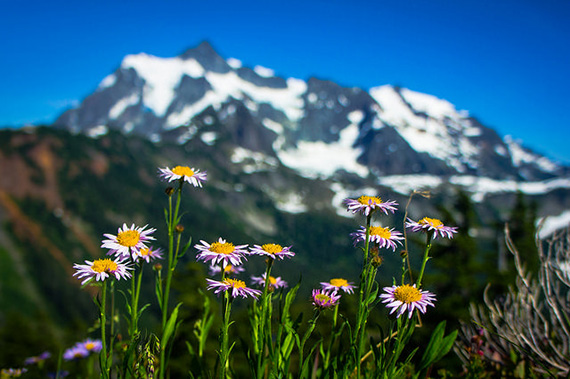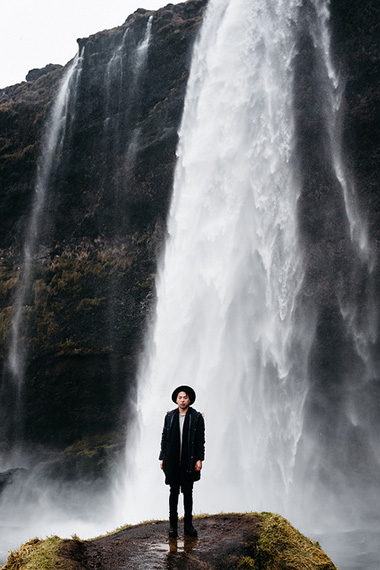Understanding depth of field is essential for any photographer who wants to move past the beginner stage. Using depth of field well gives you great control over the impact of your photos. For new photographers, depth of field can also be one of the most difficult elements to master.

photo by Johnny Silvercloud
Even when you break it down to the simplest terms, the relationship between aperture and depth of field can seem confusing. Whenever I teach a class or try to explain the manual settings on a friend’s camera, this is the topic we have to go over again and again. The good news is that with practice and concentration, the aperture/depth of field relationship will finally ‘click’ for you. The bad news is there is more to understanding depth of field than just using your aperture.
But let’s start at the beginning.
What is Depth of Field?
In simple terms, the depth of field is the area behind and in front of your main point of focus that is also acceptably in focus. So if you focus on a subject one meter away, you might look at your photo and find that everything from 0.9 to 1.2 meters is in focus. In this case, your depth of field is 0.3 meters (30 centimeters).
The very first thing a new photographer learns about depth of field is that it is controlled by the aperture on the lens. Very simply, a smaller aperture (larger f-stop number) creates a larger depth of field, and a larger aperture (smaller f-stop number) creates a narrower depth of field.

photo by W & J
So if we go back to our previous example, let’s say the 30cm depth of field was captured with an aperture of f/8. You could narrow the depth of field considerably by adjusting the aperture to f/2.8, a much wider setting.
Sound confusing? If this is your first time working with depth of field, don’t worry. Go outside right now and take some shots just as I have described, and you should be able to see the results right away.
So if it is that simple, why do so many people struggle with depth of field? As I wrote earlier, there is more to depth of field than just the aperture.
Depth of field is also affected by how close the subject appears in your photo. That means either how close you are to the subject, or how much you magnify or reduce the subject using different lenses.
The closer you are to your subject, or the closer you make the subject appear by zooming in with your lens, the smaller the depth of field becomes. Let’s say you are photographing a person five meters away. At this distance, a standard or wide-angle lens will not only show a lot of background, but the wide depth of field could make the background quite distracting. However, if you walk much closer to the subject and re-focus, the depth of field will become much smaller. As a result, the well-focused person will stand out clearly from a blurry background. You can maximize the effect by opening the aperture to its widest setting.

photo by Jonathan Grado
Now imagine your subject is posing in front of a beautiful waterfall. If you stand close to the subject and photograph them with a wide aperture, you could get a great shot of the person, but the waterfall will be an out of focus blur. You could improve the situation slightly by closing the aperture a few stops. However, the most effective way to improve the depth of field is to stand a few meters farther back, and/or zoom back to a wider angle with your lens. Not only will more background be visible, it will also be sharper (thanks to the increased depth of field) than if you adjusted the aperture alone.
There you have a quick look at three factors than can make it easier to master depth of field: aperture, distance from the subject, and the length of the lens. Now go and try out these ideas at the next opportunity. Assuming you are using a digital camera, it won’t cost you anything and you can see the results right away. With practice and patience, you will get a ‘feel’ for depth of field, and how to use it to improve your photography.
About the Author:
Andrew Goodall writes for http://www.naturesimage.com.au and is a nature photographer based in Australia. He manages a gallery in Montville full of landscape photography from throughout Australia.
Like This Article?
Don't Miss The Next One!
Join over 100,000 photographers of all experience levels who receive our free photography tips and articles to stay current:






I presume that the Digital Camera being used in these illustrations is set in Aperture mode, and the shutter speed is then set by the camera.to get the proper amount of light.
Anybody with some photographic knowledge would be able to put this article together (is it), but where is it??
Thank you so much for the author who had the courage to publish this. Obviously the crits do not have the guts to say what they think….maybe they dont think.
This is the perfect article, I have read ever before about depth of field.
I would hv expected more photo examples to show exactly what the author was referencing. My imagination runs wild. Haha.
This is a good article but I see many articles regard DoF, how to adjust it, and the effect aperture size has on foreground/background elements in a photograph. This article was unique in that it gave the reader an option to moving closer/further to the subject in lieu of adjusting the aperture size. The point I never see addressed in DoF articles is how f-stop changes affect the amount of light needed to properly expose the photo. Beginning photographers should understand that adjustments will need to be made. A smaller aperture (larger f-stop number) will need more light or a slower shutter speed to properly expose the photo.
“There you have a quick look at three factors than can make it easier to master depth of field: aperture, distance from the subject, and the length of the lens.”
The article seems incomplete; not one word about how the length of the lens contributes to depth of field. Fail…
What I would like to read about is the photographer’s thought process. When a particular scene is to be captured, does the photographer think that a F8 or a F5.6 is needed, or to crank it up to an F22? When that partciular setting is set, explain why it was selected. Then is the shutter speed set to correspond to the desired f-stop? Like the shot of the Vietnamese farmer, what was the initial setting that the photographer wanted to use (f-stop I assume), and distance background is wanted to be out of the field of focus? Then, the shutter speed is set to match that f-stop, so I would assume. Thanks.